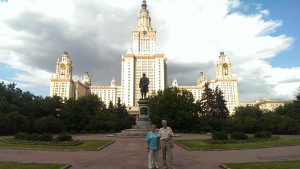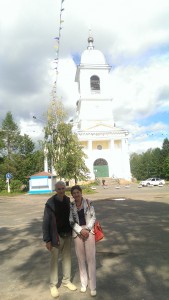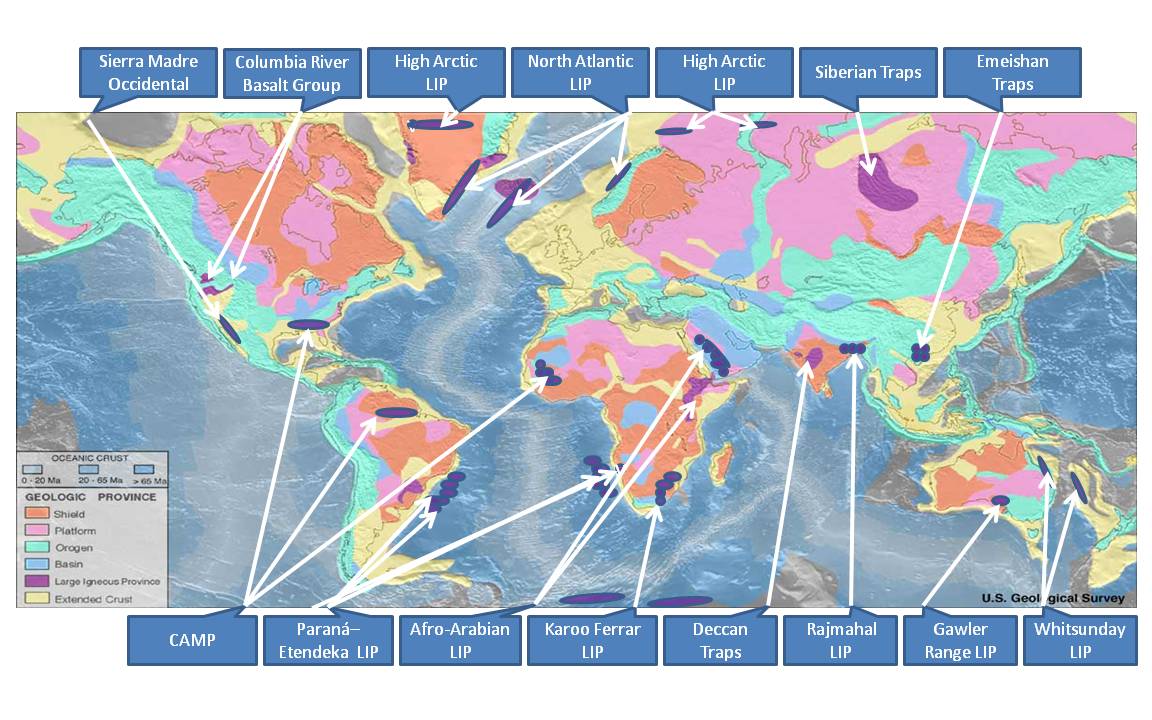Recently, I received an interesting email from Dmitry who wrote the following:
“According to the Dynamo theory Earth’s magnetic field is generated by rotating, convecting and electrically conducting fluid that maintain a magnetic field.
But what if it creates just by solar wind itself? In this case we don’t need to invent anything else to explain magnetic fields of planets. This process is similar to the principle of electromagnet.
Solar wind magnetizes planets. Now most of it just flies away of the Earth, but a small part of it passes mainly through the north and south poles.
This phenomenon may be also involved in heating the Earth’s core due to the conductor resistance, in the same way as wire is heated when electricity passed through it.”
Let me try to respond to this one piece at a time:
“According to the Dynamo theory Earth’s magnetic field is generated by rotating, convecting and electrically conducting fluid that maintain a magnetic field.”
Spot on – the fluid is in the Earth’s liquid outer core at a depth 2871 km and is convecting because of the release of light elements by the freezing of the inner core beneath it.
“But what if it is created just by the solar wind itself?”
This is already partly true. A small proportion (around 1%) of the Earth’s magnetic field (referred to as the external field) is produced by the interaction of the solar wind (charged particles from the sun) with similar particles within the Earth’s magnetosphere. This part is much weaker, more complex, and changes faster in time than the main part of the field.
“In this case we don’t need to invent anything else to explain magnetic fields of planets.”
Aah but we do. Venus is, in many ways, similar to the Earth and receives more solar wind (being closer to the source) and yet has a field that is 100,000 times weaker than Earth’s. The explanation? No core dynamo. And why not? Difficult to say for certain but likely because the core is not cooling fast enough to fuel a dynamo process.
“Solar wind magnetizes planets.”
Yes it does but the effect is very small and relatively shallow. A subsurface exploration technique known as magnetotellurics measures the magnetic field induced in the ground by as a consequence of electric currents produced by the solar wind. The measured field variations are typically about 0.001 nT (nano-Tesla) over a period of hours and the resulting electrical currents go to a depth of a few tens of km. Compare this to the main internal field which has an intensity at the surface of around 40,000 nT and seems to come from the core with a depth of nearly 3,000 km. It is a small player.
“Now most of it just flies away of the Earth, but a small part of it passes mainly through the north and south poles.”
All true but the strongest external field variations are felt at the poles because that is where the existing internally-generated field is the steepest. Therefore, it is here that the solar wind particles can most easily travel down the field lines into the atmosphere.

“This phenomenon may be also involved in heating the Earth’s core due to the conductor resistance, in the same way as wire is heated when electricity passed through it.”
The principle here (Ohmic dissipation) is correct but, in practice, I would expect the core heating from this process to be vanishingly small. Pretty much all of the external field will be attenuated by the crust and converted (“dissipated”) to heat generated near the surface so none will be left to penetrate the core. Even close to the surface, the heating effect is very very minor compared to that coming from the Earth’s interior. A back of the envelope calculation gives, very approximately, a heating rate at a few tens of km down of about one-quadrillionth of a degree Celsius per second from these “telluric” currents. Compare this to natural geothermal gradients of tens of degrees per km and you get the picture that this is small-fry indeed.
I hope this post has answered your questions Dmitry and is useful to other readers. I would be very happy to respond to similar emails (or, even better, posts on this website) in the future.
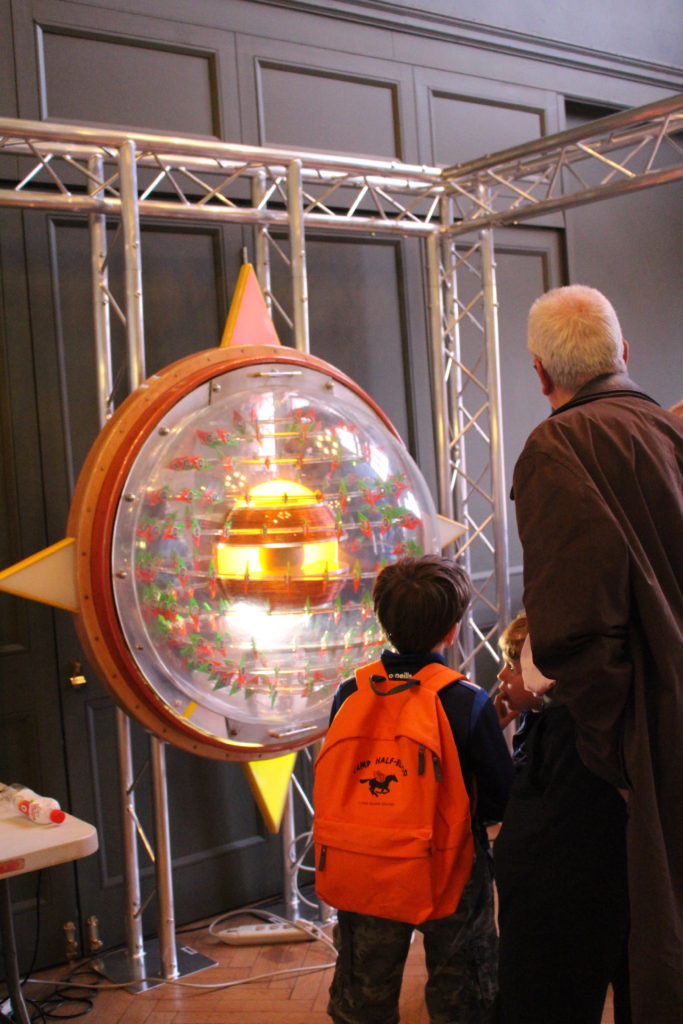
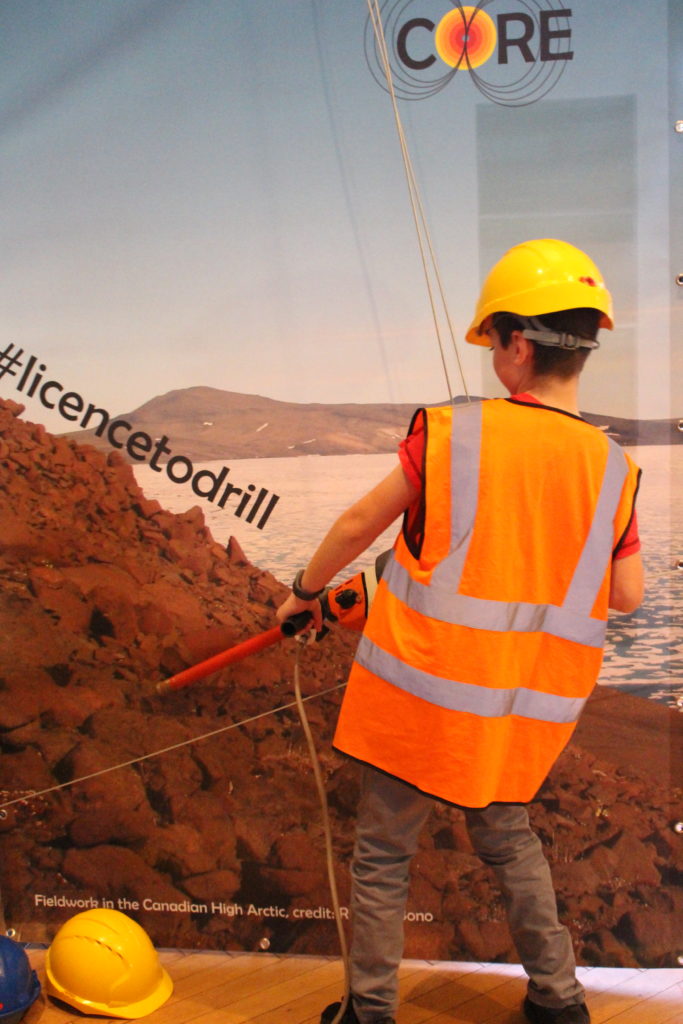

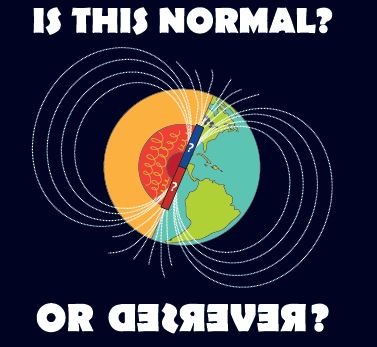

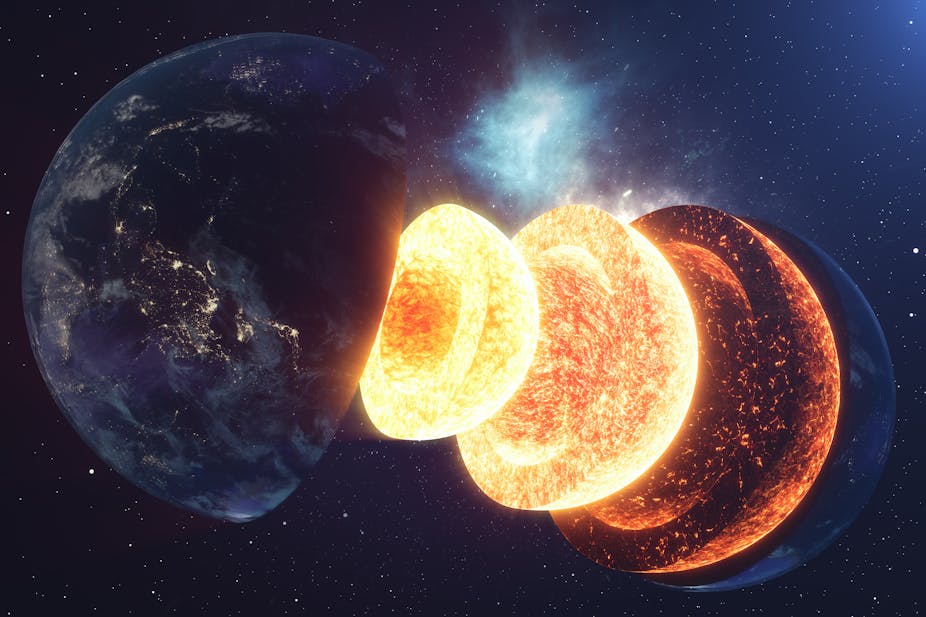
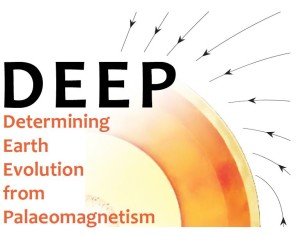

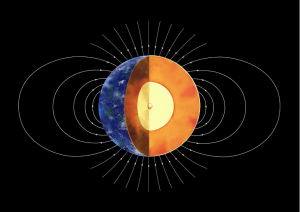 on which I am lead-author claims that we have may have pinned down the point in Earth’s history when the inner core first started to freeze at the centre of the Earth to between 1 and 1.5 billion years ago. I already thought this was big news so was a bit deflated when Nature decided not to run with the excellent picture (left) created by Kay Lancaster (cartographer at the University of Liverpool) on its cover.
on which I am lead-author claims that we have may have pinned down the point in Earth’s history when the inner core first started to freeze at the centre of the Earth to between 1 and 1.5 billion years ago. I already thought this was big news so was a bit deflated when Nature decided not to run with the excellent picture (left) created by Kay Lancaster (cartographer at the University of Liverpool) on its cover.

